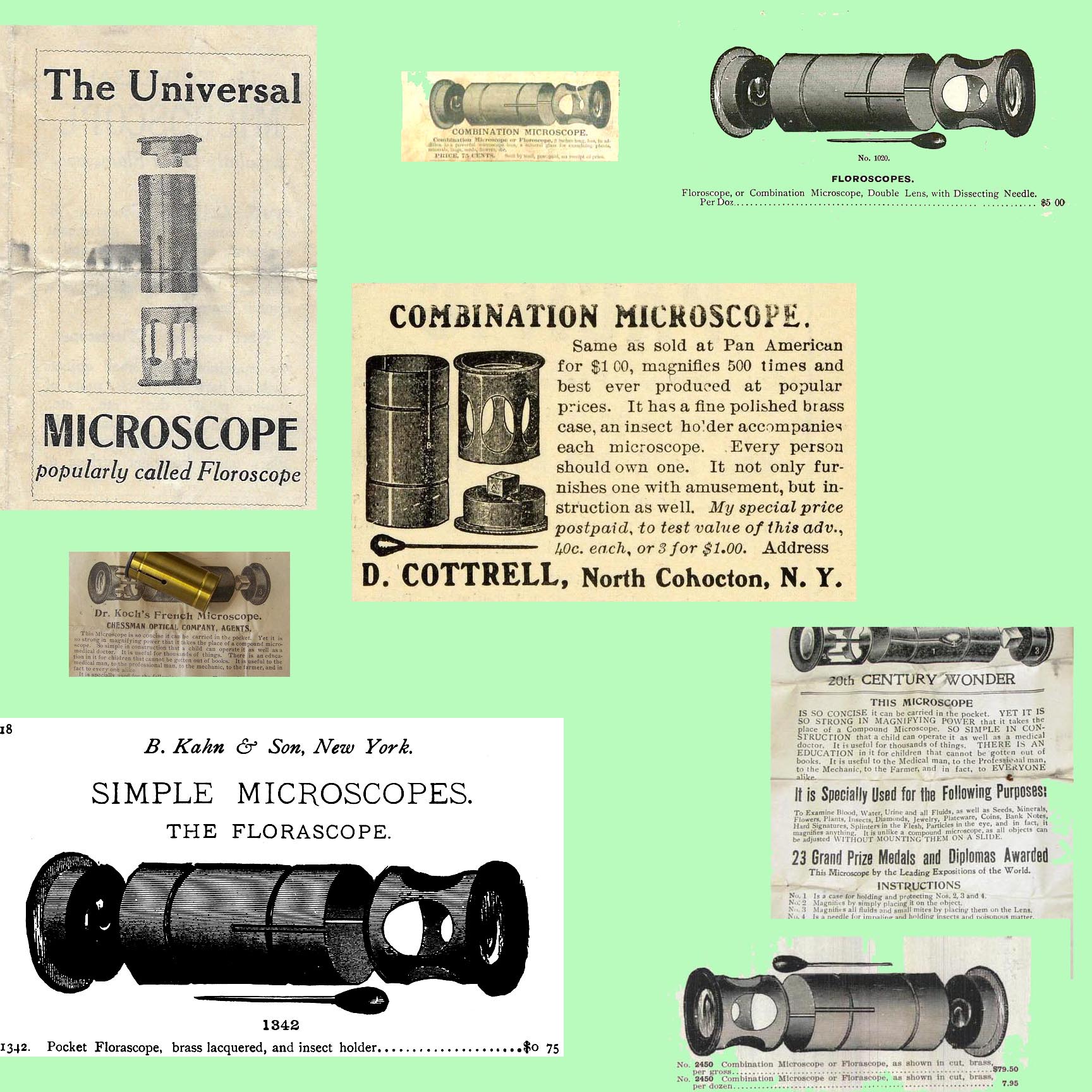
| DESCRIPTION | HISTORY |
Please Click On Any Picture for a Larger Version
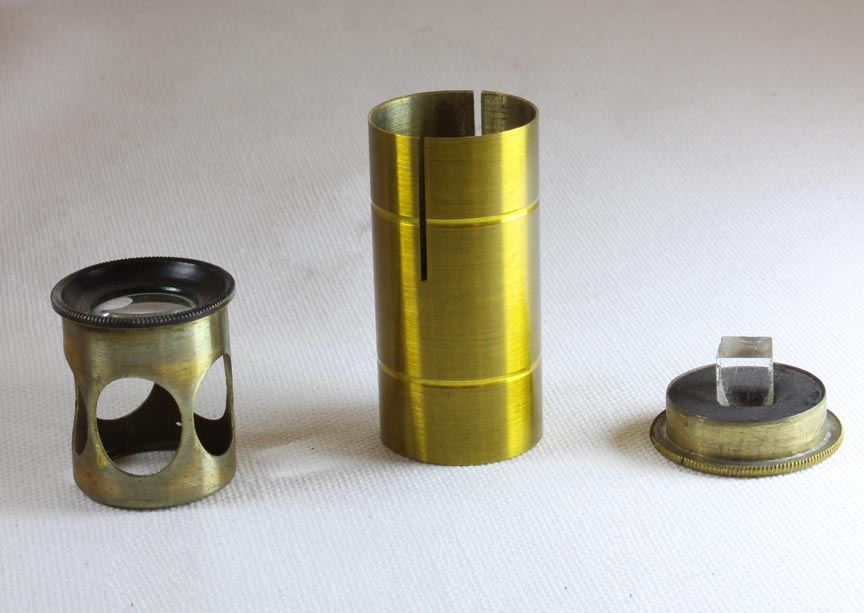
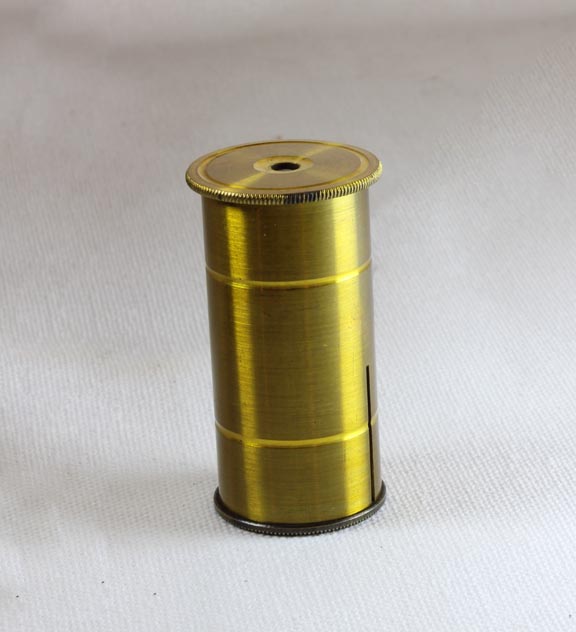
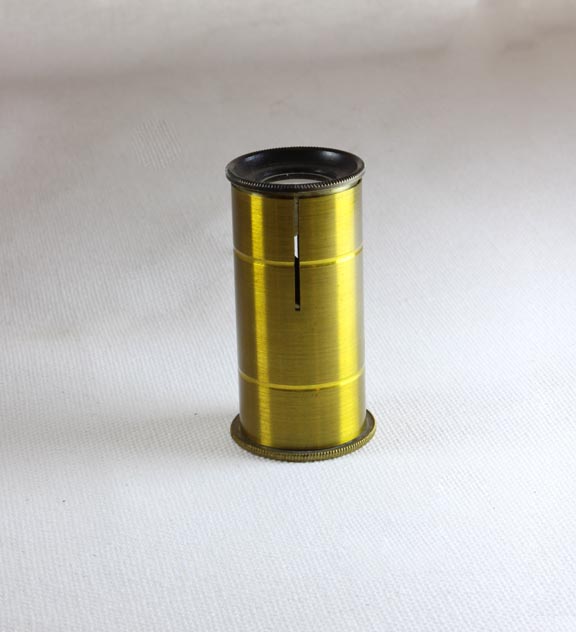
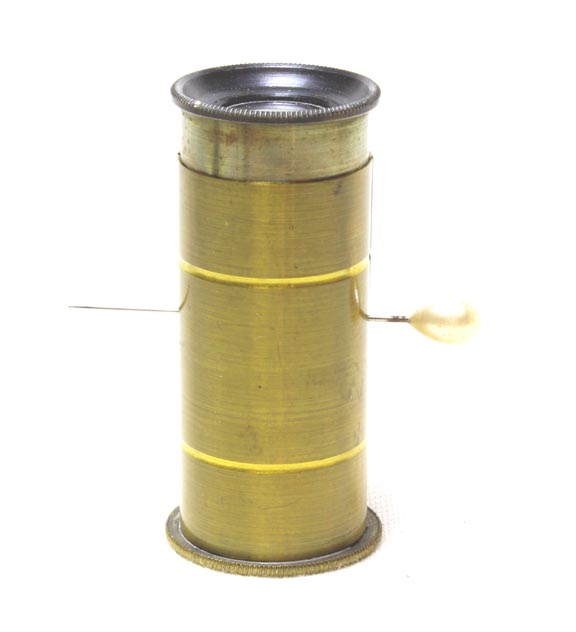
 This instrument is made of thin lacquered brass and measures 51 mm in length and about 24 mm diameter at the barrel. The optical ends are 25 and 27 mm in diameter. One end is simple loupe type magnifier, while the other end houses a rectangular Stanhope type of lens. The latter is the higher power lens. There is a slit in the tube to accomodate an 'insect holder' (a hat pin!). Another nearly identical but slightly shorter example is also in this collection and is shown to the right with this one. Still another example has a slight improvement with an opening in the tube that could except a vial.
This instrument is made of thin lacquered brass and measures 51 mm in length and about 24 mm diameter at the barrel. The optical ends are 25 and 27 mm in diameter. One end is simple loupe type magnifier, while the other end houses a rectangular Stanhope type of lens. The latter is the higher power lens. There is a slit in the tube to accomodate an 'insect holder' (a hat pin!). Another nearly identical but slightly shorter example is also in this collection and is shown to the right with this one. Still another example has a slight improvement with an opening in the tube that could except a vial.
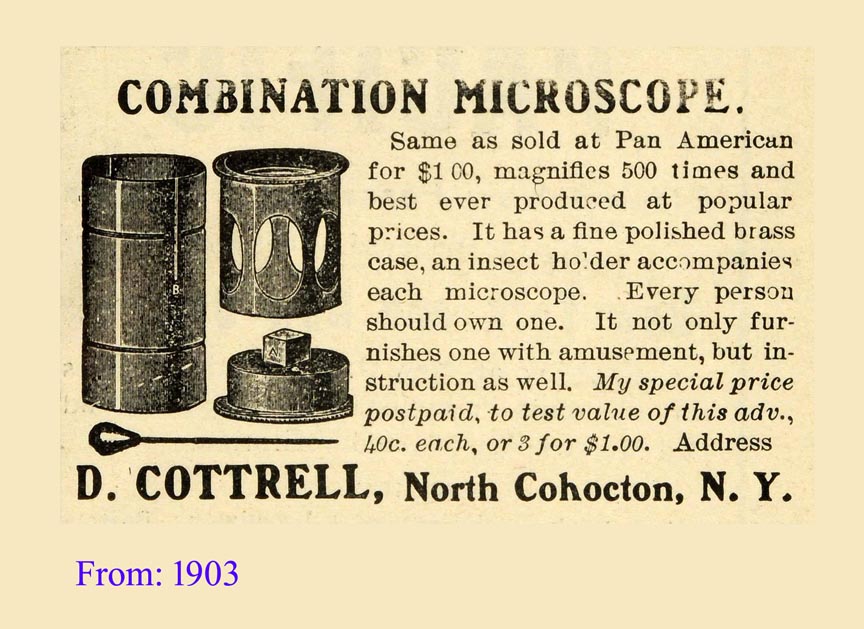 This little combination magnifier may be the most common antique microscope ever available. It also may have the most alternative names! In its most basic form, that shown on this page, it had only a slit on the side to accomodate the pin. A slightly more useful design included a larger opening that could accomodate a small vial for liquid-containing specimens. Later, a swivelling mirror and a horizontal slot for small slides was provided. The original form was offered in French advertisments as early as 1851, and in English ads as early as 1885, but was featured in the Pan American Exposition, a Worlds Fair of 1901. The story of its origin for the examination of contaminants of pepper, sugar, etc is described here by Brian Stevenson. This instrument and its variations continued to be sold through at least most of the second quarter of the twentieth century. Many merchants sold this either via their catalogs, at exhibitions (fairs), or via mail through magazine advertisements. This non-achromatic magnifier of cheap constuction, should not be confused with the superficially similar, but much higher quality simple microscopes of the period such as the Waechter Achromatic Universal Microscope. Nevertheless, it works surprisingly well considering its low price.
This little combination magnifier may be the most common antique microscope ever available. It also may have the most alternative names! In its most basic form, that shown on this page, it had only a slit on the side to accomodate the pin. A slightly more useful design included a larger opening that could accomodate a small vial for liquid-containing specimens. Later, a swivelling mirror and a horizontal slot for small slides was provided. The original form was offered in French advertisments as early as 1851, and in English ads as early as 1885, but was featured in the Pan American Exposition, a Worlds Fair of 1901. The story of its origin for the examination of contaminants of pepper, sugar, etc is described here by Brian Stevenson. This instrument and its variations continued to be sold through at least most of the second quarter of the twentieth century. Many merchants sold this either via their catalogs, at exhibitions (fairs), or via mail through magazine advertisements. This non-achromatic magnifier of cheap constuction, should not be confused with the superficially similar, but much higher quality simple microscopes of the period such as the Waechter Achromatic Universal Microscope. Nevertheless, it works surprisingly well considering its low price.